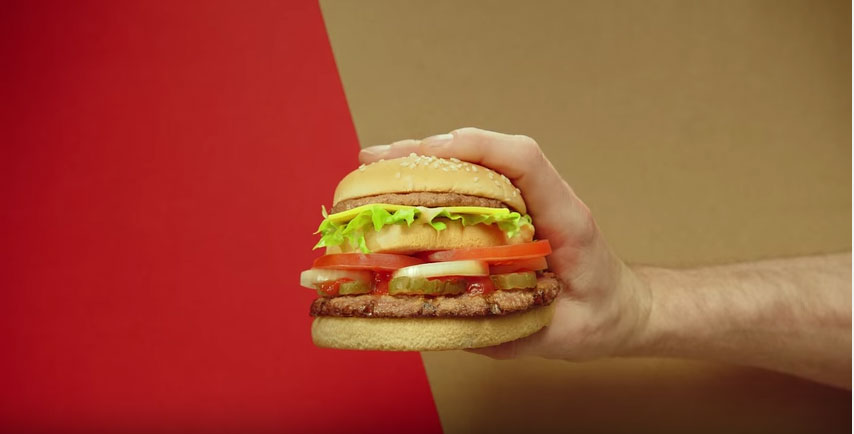'McWhopper' Mega-Burger Would Have Mega-Calories

Burger King is proposing a one-day truce with its fast-food competitor McDonald's to create the "McWhopper," a combination of the Big Mac and the Whopper, the most popular burgers at the respective chains. But just how many calories would this giant assemblage of beef and toppings have?
Neither restaurant has released information about the exact nutritional value of the hypothetical mega-burger, which Burger King wants to sell in honor of World Peace Day in September. However, it's possible to come up with a ballpark estimate using information from the fast-food chains' websites.
According to the Burger King proposal, the McWhopper would be 6 parts Big Mac and 6 parts Whopper. That is, the sandwich's top half would include the Big Mac's top bun, beef patty, cheese, lettuce, special sauce and middle bun, while the bottom half would consist of the Whopper's tomato, onion, ketchup, pickles, beef patty and bottom bun.
To start our McWhopper calculation, let's first look at how many calories are in each burger separately: The Big Mac has 540 calories, and the Whopper has 650 calories.
For a simple estimate of the McWhopper calories, we would divide the calories in the Big Mac and Whopper each by two, and add them together, giving us 595 calories. However, this underestimates the calories in the McWhopper, because the mega-burger contains two of the three buns found in a normal Big Mac, so it actually has more than half of that burger's usual calories. [9 Snack Foods: Healthy or Not?]
To get a more precise estimate, we used the nutrition calculators on the Burger King and McDonald's websites, which allow one to add or subtract ingredients to each burger. By doing this, we figured out that each bun on the Big Mac contains about 73 calories, and so two buns contain 146 calories. The two patties on a Big Mac contain 170 calories, and so one patty would contain 85 calories. The cheese slice has 50 calories, and the lettuce has 10 calories. The glob of special sauce on a Big Mac contains 90 calories, and if we assume that only about half of that would be used on the McWhopper, that means 45 calories. Add all that together, and we get 336 calories for the Big Mac part of the McWhopper.
For the Whopper, we find that each bun contains 110 calories, the patty contains 250 calories, the ketchup has 20 calories, and the tomato, onion and pickles together have 10 calories. Add that together, and we get 390 calories for the Whopper part of the McWhopper.
Get the world’s most fascinating discoveries delivered straight to your inbox.
Combine the two parts, and we get 726 calories for the two burgers together, or about one-third of a person's total recommended daily calories.
Using a similar method, we can also figure out the amount of fat in the McWhopper: The Big Mac part contains 16.5 grams of fat, and the Whopper part contains 19.5 grams, for a total of 36 grams of fat, or about 54 percent of what's considered the maximum amount a person should eat in a day.
It remains unclear if the McWhopper will come to fruition. McDonald's CEO Steve Easterbrook responded to Burger King's proposal by saying he would be "in touch" with the fast-food rival. "We love the intention but think our two brands could do something bigger to make a difference," Easterbrook said on Facebook.
Follow Rachael Rettner @RachaelRettner. Follow Live Science @livescience, Facebook & Google+. Original article on Live Science.

Rachael is a Live Science contributor, and was a former channel editor and senior writer for Live Science between 2010 and 2022. She has a master's degree in journalism from New York University's Science, Health and Environmental Reporting Program. She also holds a B.S. in molecular biology and an M.S. in biology from the University of California, San Diego. Her work has appeared in Scienceline, The Washington Post and Scientific American.


